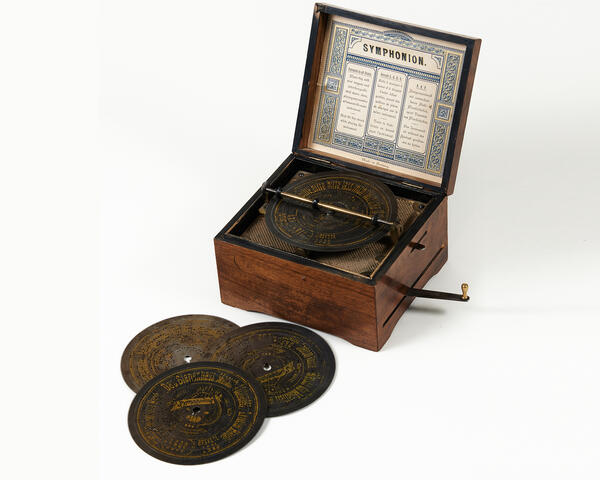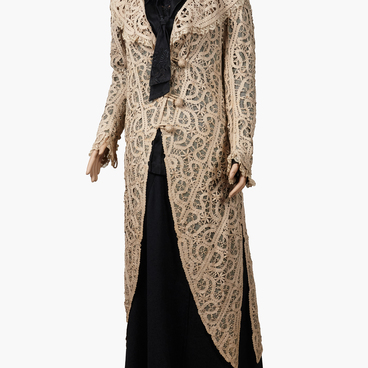The museum houses the 19th-century symphonion donated from a private collection. It is a mechanical sound reproducer, similar to a music box in its technology. The instrument, which dates back to the 1880s, was invented in Germany. Friedrich Kaufmann, the son of a mechanic and watchmaker from Dresden, is considered the inventor of the symphonion. His father made watches that produced sounds of flute and harp simultaneously. This example inspired Friedrich Kaufman to create an automatic music machine. Later, the symphonion became a base for the orchestrion, an improved musical device, this time made by Friedrich’s son.
The symphonion was later improved by another inventor — the German engineer Paul Lochmann from Leipzig. He created a device that worked by a comb with metal pins of different lengths. A metal disc with teeth revolved above the comb, which produced musical notes by touching the pins.
Metal discs are considered a great invention for the music industry. They enabled to launch mass production of music boxes with a large repertoire. Lochmann’s disc devices entered the market in 1886 and soon turned Leipzig into the center of musical prowess.
Employees of Lohmann’s workshop dealt with perforated discs, which were called “metal notes” in the price lists of the 19th century. They used to be made of cardboard and metal sheets, but that was not a suitable option. The desired effect was achieved only by perforated discs.
Other companies for disc machines production were launched in Leipzig as well. Polyphon and Symphonion companies were the largest of them. In the beginning, Lochmann’s staff included 25 people, but three years later there were 180 employees and the total production of automatic machines reached 15 thousand units per year.
The inside of the symphonion cover from the museum collection contains a paper label with working instructions, a description in three languages, and the Symphonion brand logo. Also, there is a handle on the sidewall of the box that activates the mechanism. The metal disc with the melody record was held by a special metal rod. According to the records from 1903, the Symphonion company produced from 5 to 6 thousand musical devices per year. The symphonions were popular until the 1920s when they were replaced by more sophisticated musical machines.
The symphonion was later improved by another inventor — the German engineer Paul Lochmann from Leipzig. He created a device that worked by a comb with metal pins of different lengths. A metal disc with teeth revolved above the comb, which produced musical notes by touching the pins.
Metal discs are considered a great invention for the music industry. They enabled to launch mass production of music boxes with a large repertoire. Lochmann’s disc devices entered the market in 1886 and soon turned Leipzig into the center of musical prowess.
Employees of Lohmann’s workshop dealt with perforated discs, which were called “metal notes” in the price lists of the 19th century. They used to be made of cardboard and metal sheets, but that was not a suitable option. The desired effect was achieved only by perforated discs.
Other companies for disc machines production were launched in Leipzig as well. Polyphon and Symphonion companies were the largest of them. In the beginning, Lochmann’s staff included 25 people, but three years later there were 180 employees and the total production of automatic machines reached 15 thousand units per year.
The inside of the symphonion cover from the museum collection contains a paper label with working instructions, a description in three languages, and the Symphonion brand logo. Also, there is a handle on the sidewall of the box that activates the mechanism. The metal disc with the melody record was held by a special metal rod. According to the records from 1903, the Symphonion company produced from 5 to 6 thousand musical devices per year. The symphonions were popular until the 1920s when they were replaced by more sophisticated musical machines.



